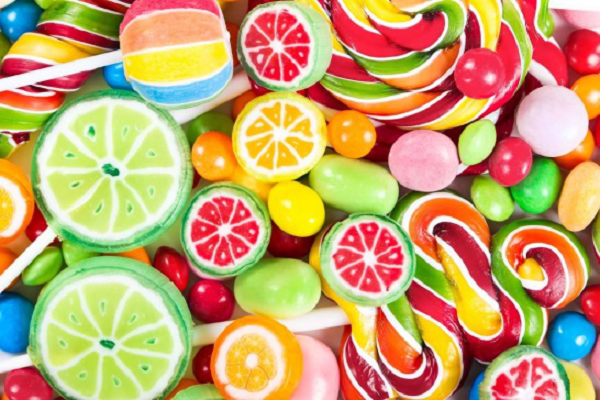Release date: 2008-09-08 Evaluation of the accuracy of lesion diagnosis Huang Meiping Liu Qishun Liu Hui Liang Changhong Zhang Shaobin [Abstract] Objective To investigate the image quality of 64-slice spiral CT (MDCT) coronary angiography and the accuracy of diagnosis of coronary artery lesions. Methods A total of 105 patients (including high heart rate, coronary artery calcification, and obesity, except for atrial fibrillation) underwent MDCT coronary angiography and were compared with conventional coronary angiography. Analysis of MDCT image quality and display of coronary lesions. Results Each segment was analyzed for 13 segments of the coronary arteries (1365 segments total). 1144 segments were able to meet lumen evaluation, and 221 segments were unable to meet lumen evaluation due to severe calcification (153 segments) or motion artifacts (68 segments). In 105 cases, the median calcification score was 154 (range 0-1983); 87 cases of calcification score <1000, median 105 (range 0-994); 18 cases of calcification score ≥1000, median 1477 (range 1115 ~ 1983). MDCT found that the total sensitivity, specificity, positive predictive value, and negative predictive value of ≥50% stenosis were 85.7%, 97.9%, 93.0%, 95.5%, respectively. 0%, 98.9%, 95.3%, 99 . 0%. The clinically correct diagnosis rate (detected or excluded at least 1 significant lesion) was 92.4% (97 / 105). Conclusion For non-selective cases, MDCT provides coronary imaging with high diagnostic accuracy. [Keywords] coronary artery disease; tomography, X-ray computed; angiography Multidetector CT of the cor onar y imaging: assessment of image quality a nd a ccura cy in detectingstenoses HUANG Mei-ping, LIU Qi-shun, LIU Hui, LIANG Cha ng-hong, ZHANG Sha o-bin. Department of Radiology, Guangdong Provincial People's Hospital, Gua ngzhou 510080, ChinaCorresponding author: LIANG Cha ng-hong, Ema il: dr_lia ng62@hotmail. com [Abstra ct Objective To evaluate the image quality of 64-multi detector computed tomography (MDCT) and the clinical accuracy in detecting coronary artery lesions. Methods One hundred and five patientss were studied by MDCT. The results were compared with invasive coronary angiography ( ICA) .Patients Were excluded for atrial fibrillation, but not for high heart rate, coronary calcMDCT was analyzed with regard to image quality and presence of coronary artery lesions. Results The dataevaluation of the image quality was based on a total of 1365 segments ( 13 coro Nary segments for eachpatient) , of which 1144 segments were considered to have diagnostic image quality, but 221 segments( 16. 2% ) could not be evaluated because of severe calcartequivalent ( ASE) ] was 154 ( range0—1983) . 87 of The 105 patients had an ASE of less than 1, 000 [ median 105 ( range 0—994) ] , and18 patients had an ASE greater than 1000 [ median 1477 ( range 1115—1983) ] . For detecting lesions with50% or greater narrowing ( Without any exclusion criteria ) , the overall sensitivity, specpredictive value, and negative predictive value were 85. 7% , 97. 9% , 93.0 % , and 95. 5% , respectively.When limiting the number of patients to those With a calcium score of less than 1000 ASE, the thresholdcorrectedsensitivity for lesions with 50% or greater narrowing was 96. 0% ; specpredictive value, 95. 3% ; and negative predictive value, 99. 0% . Conclusion Our results indicate highquantitative and Qualitative diagnostic accuracy of 64-slice MSCT in comparison To QCA in a broad spectrumof patients. [Key wor ds] Coronary disease; Tomography, X-ray computed; Angiography Source: Meditech Medical Network
The human tongue has a range of specific taste sensation neural receptors called taste receptors which are organized mainly as papillae on the tongue. When stimulated by chemicals, natural or synthetic, organic or inorganic, cations or anions, the receptors send signals to the brain which interprets the stimulations as sweet, bitter, sour, salty, and savory (unami, meaty taste). For examples, cations such as Na+ present in the table salt evoke the salty taste, and H+ presents in acids evokes a sour taste. Organic compounds such as sugars, dextrins and glycerol result in sweet taste, glutamate results in savory taste, while many toxic compounds such as nicotine, morphine, caffeine, quinine, etc. result in bitter taste. The sensation of tastes is an evolution trait for defense against poisons (normally evoke bitter taste), and for allowance of nutrients intake (normally evoke sweet or savory taste).
Sugar is a natural sweetener as well as a nutrient consumed in vast quantity around the world. It is one of the major calorie intakes by humans. Over consumption of sugar often leads to obesity and other related medical conditions. High blood sugar level (hyperglycemia) is a manifestation of the disease diabetic mellitus; if not managed properly, it could lead to a range of medical complications. To combat these medical conditions, high potency Sweeteners with no calorie or low calorie intake are often being used to substitute sugar. Proper control of calorie intake, coupled with the use of these sugar substitutes has been very effective in managing the medical conditions.
Besides the medical indications, using sugar substitutes brings the economic benefit of lowering the cost of many foods and consumer products, from soft drinks to cakes, pasties, and even toothpastes.
A variety of chemical compounds, natural or synthetic, can evoke sweet taste, but not all of them are safe (for example lead acetate has a sweet taste but it is extremely toxic), nor are sweet taste specific (for examples, many of synthetic sweeteners can also evoke other senses of taste such as bitterness or metallic sensation). Therefore, selection of the right sweetener for a specific use depends not only on the cost, but also more importantly on the health and safety, the sweetening potency, the effectiveness under various physical conditions such as cooking temperature (heat stability) and pH, as well as other unwanted tense of tastes of the sweetener.
At Sunshine Biotech, we have the expertise and technical know-hows to help you make the right selection for the right use.
Sweeteners Artificial Sweetener,Stevia Liquid,Aspartame Powder,Neotame Powder Nanjing Sunshine Biotech Co., Ltd , http://www.sunshine-bio.com

